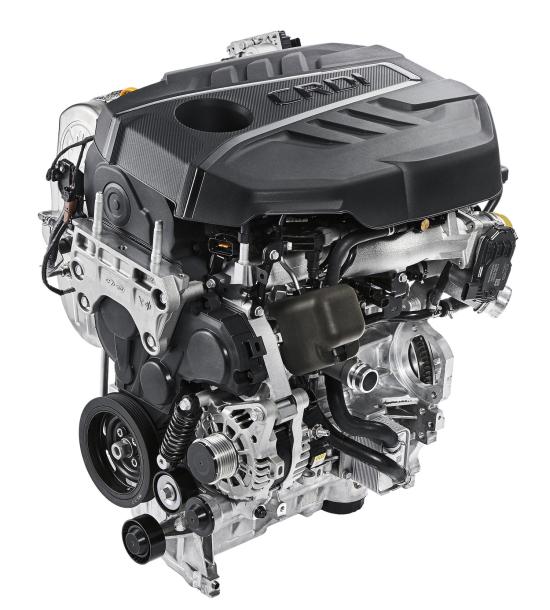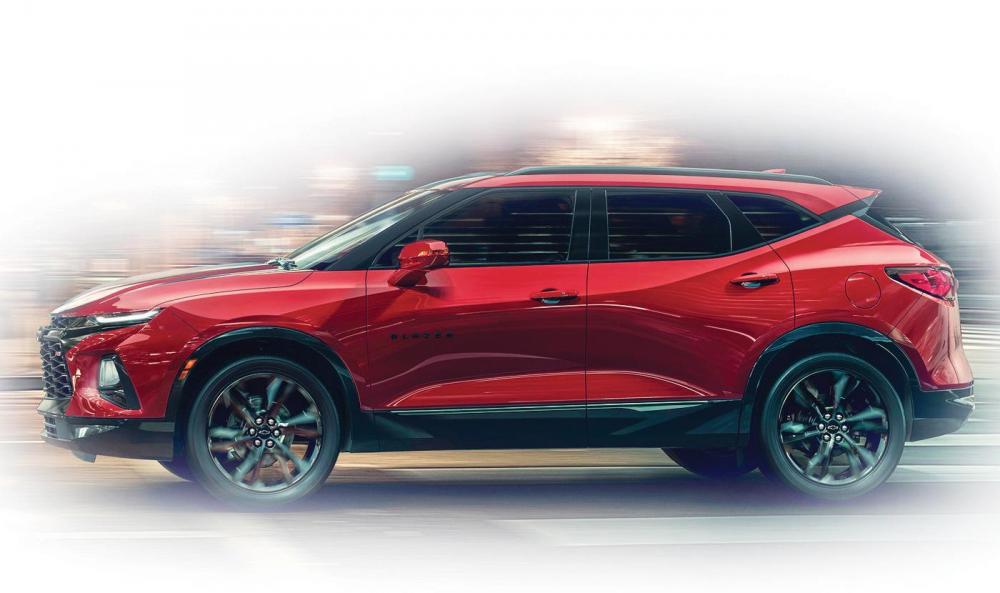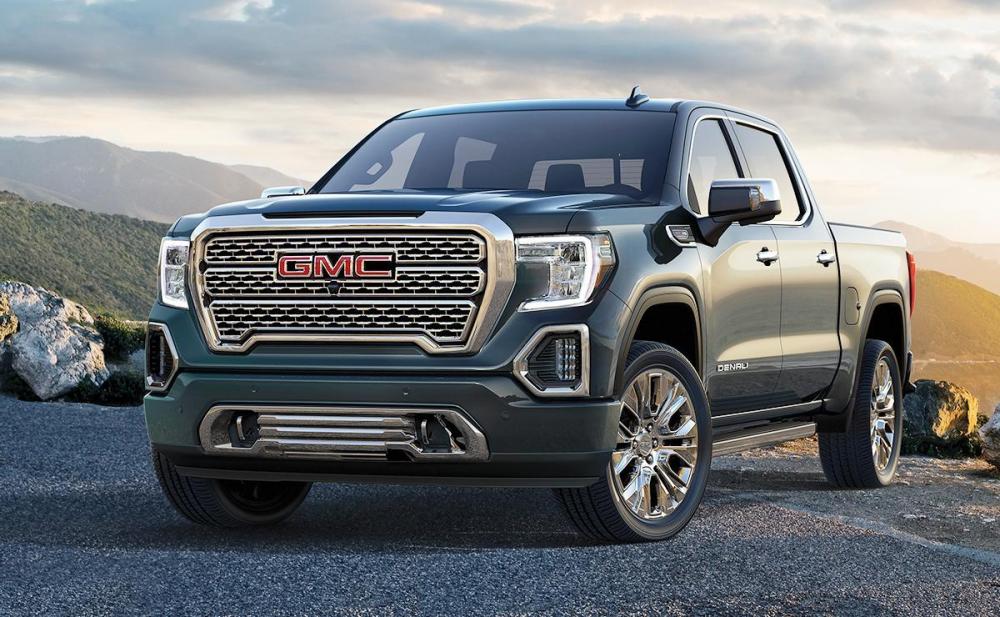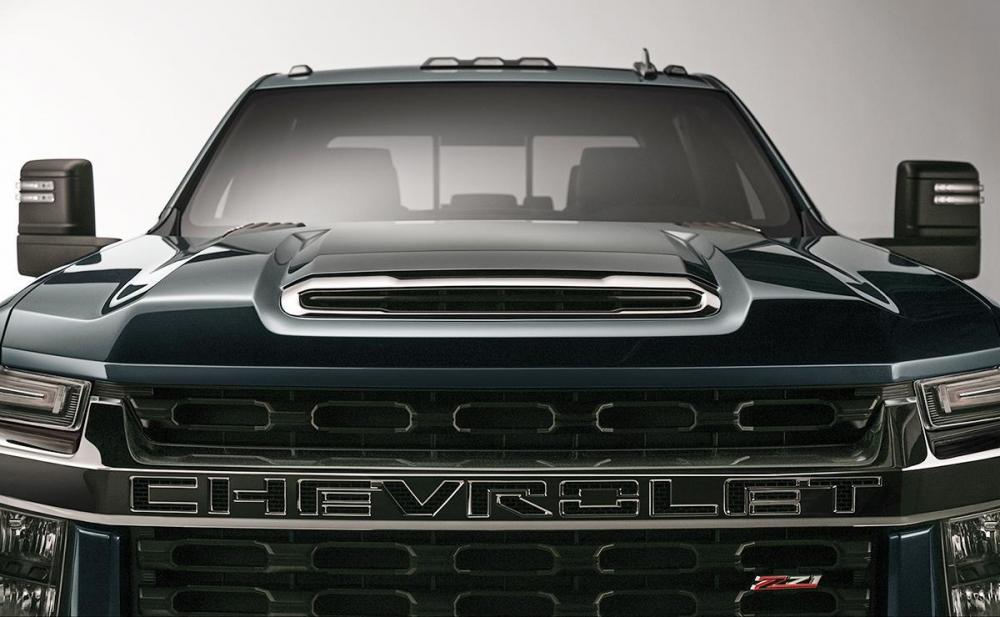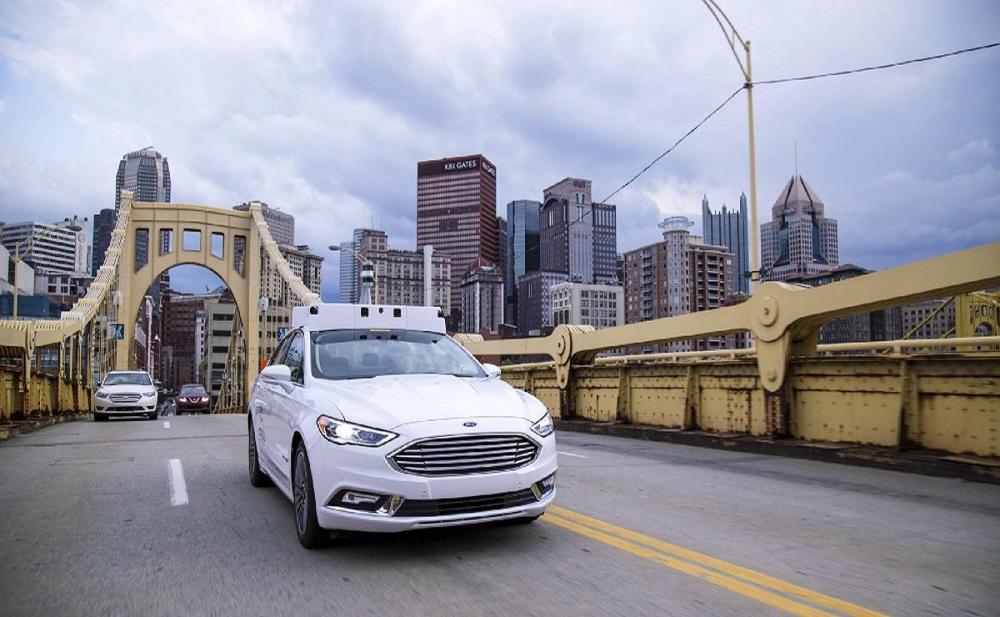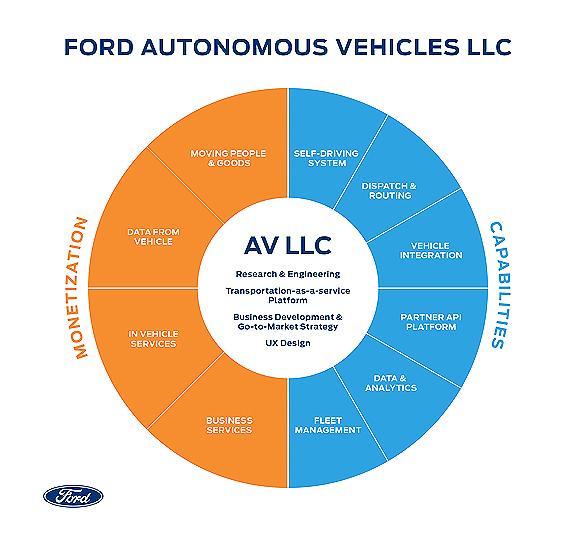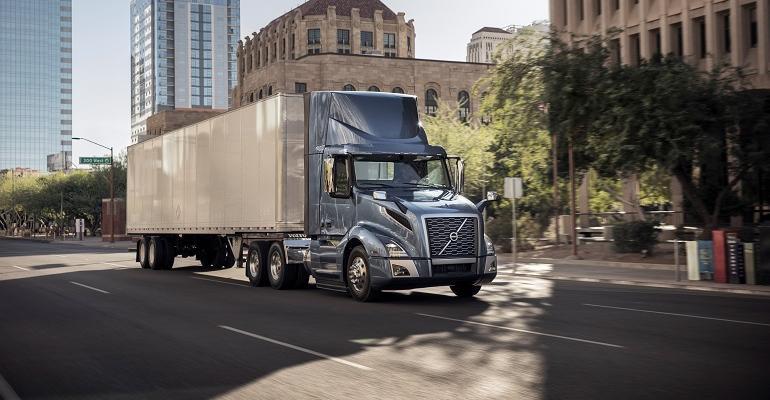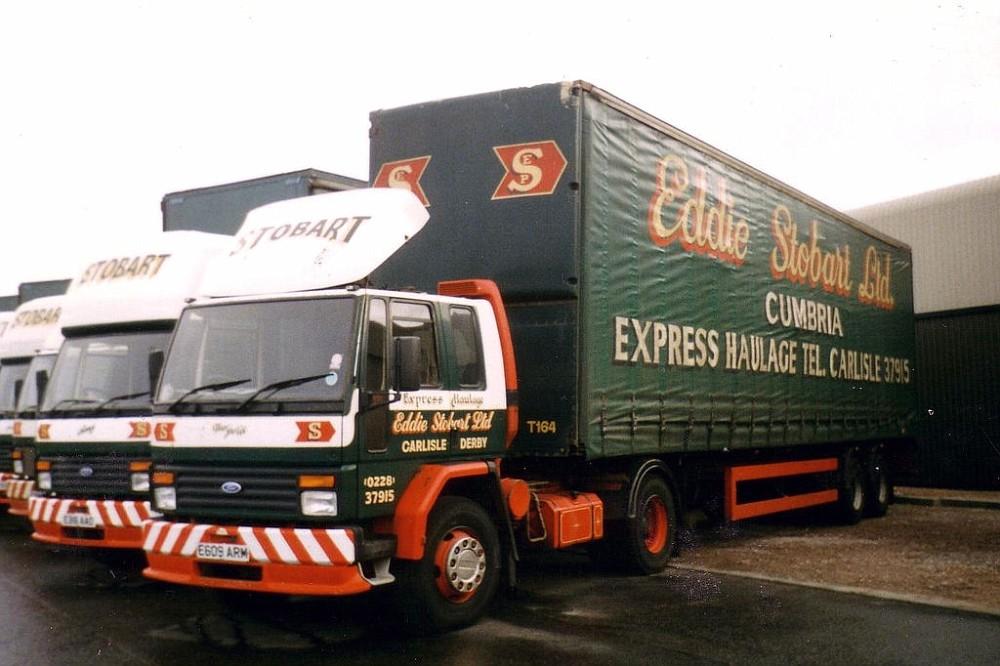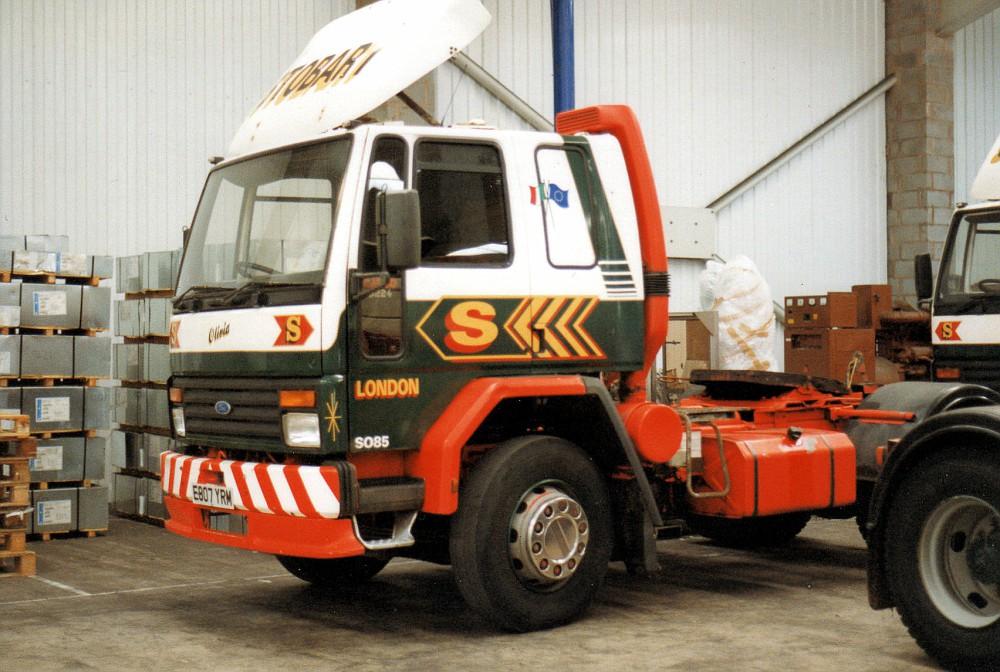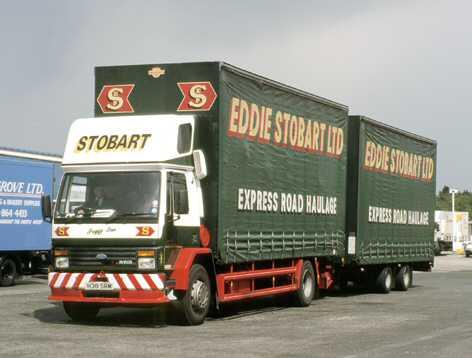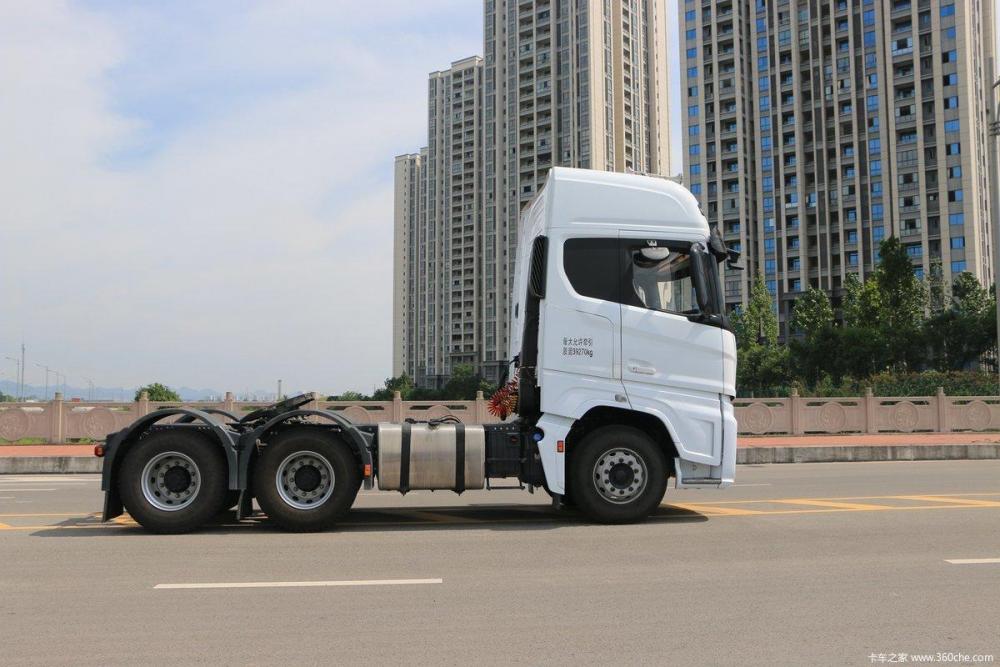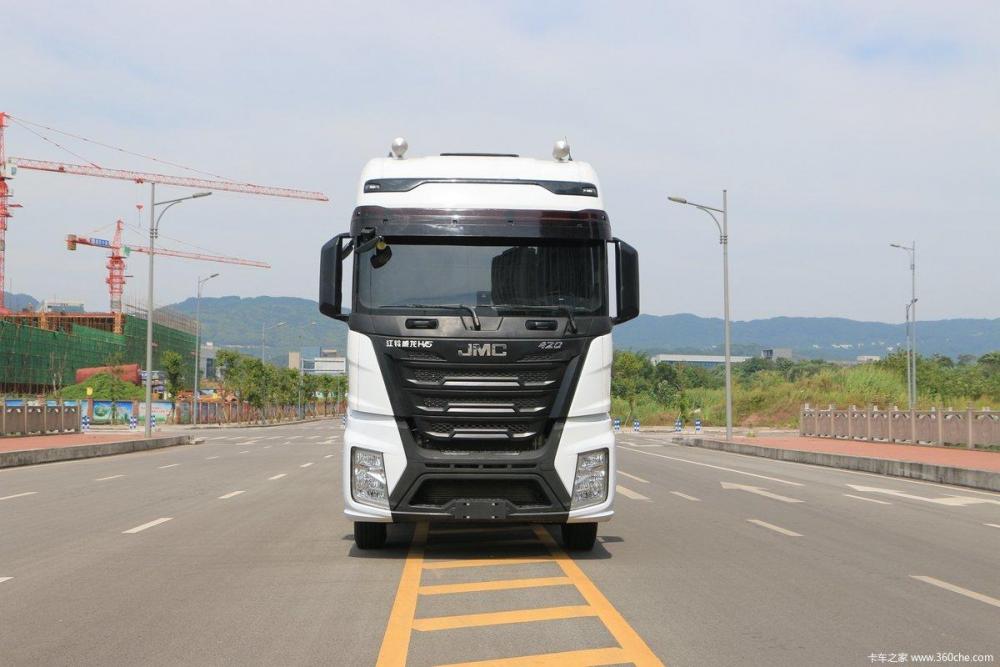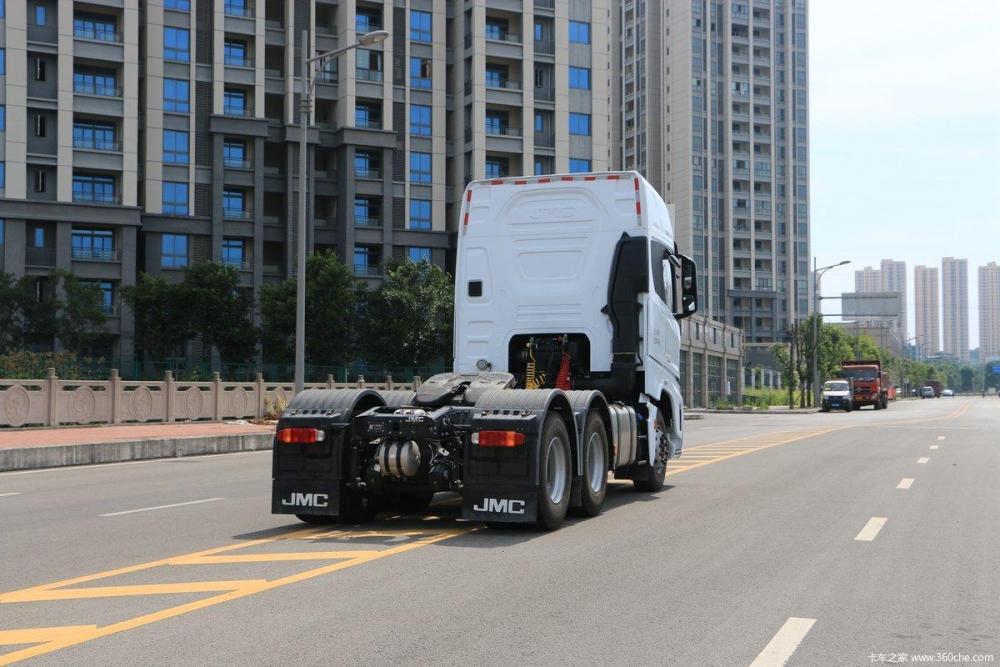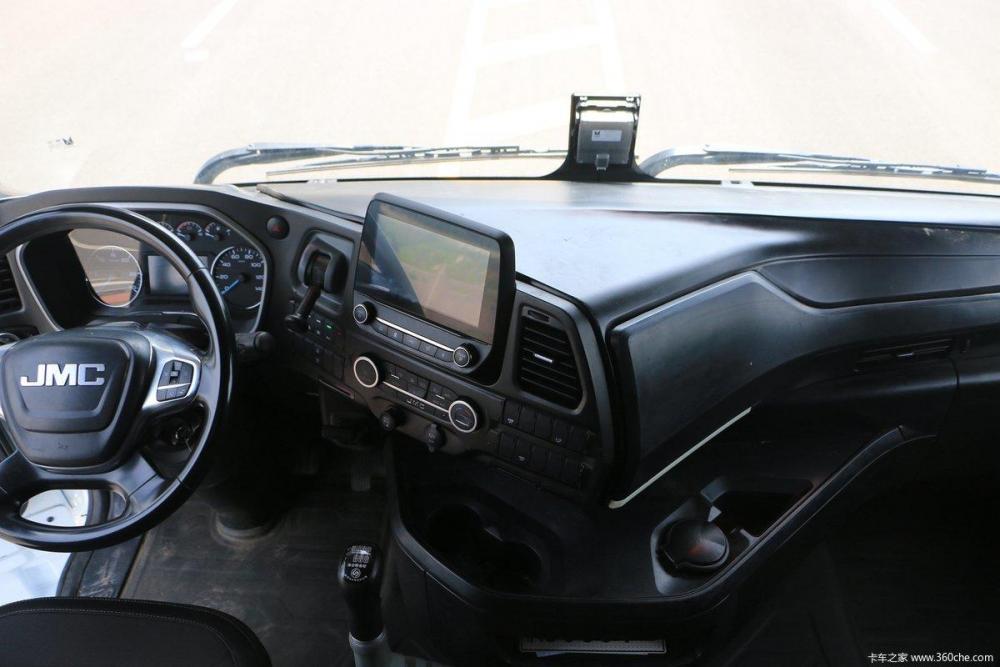
kscarbel2
Moderator-
Posts
18,886 -
Joined
-
Days Won
114
Content Type
Profiles
Forums
Gallery
Events
Blogs
BMT Wiki
Collections
Store
Everything posted by kscarbel2
-
International Trucks Press Release / July 23, 2018 It’s our steadfast commitment to leading the industry in uptime and a fresh way of looking at engine design. With a new team and fresh ideas we set out to deliver the ultimate 12.4-liter engine. .
-
Cummins Press Release / July 23, 2018 The Cummins X15™ engine is off to an exceptional start since it went into full production last year, expanding the company’s industry leading market share for Class 8 heavy duty engines and winning praise for its durability and fuel economy. The engine has won design awards, been embraced by truck makers and last month Cummins introduced a version for commercial marine segments. “Cummins has always been a technology leader, helping us to meet new emission standards whether we’re operating in California or across the nation,” said John Savage, Executive Vice President of Savage Services, a transportation, logistics and materials handling corporation that participated in the early testing of the X15. “When it comes to reliability, Cummins is progressive. They don’t sit back on their laurels.” KEY QUALITIES The X15 is today the best-selling engine for Class 8 trucks, the large trucks commonly seen on interstate highways in the U.S. Cummins supplied more diesel engines for that class than any other engine maker in 2017. Thanks largely to the X15, the company saw its market share increase from 35 percent in 2016 to 38 percent in 2017, according to WardsAuto.com. Available in performance and efficiency configurations, the engine’s popularity stems from three key attributes: reliability, lower maintenance costs and fuel economy. Reliability was enhanced by a design that simplified some systems, backed by more than 10 million miles of testing. Total cost of ownership has been reduced by as much as 40 percent compared to a 2010 ISX15 engine. And the fuel economy numbers are particularly striking. Compared to corresponding 2016 models, the X15 Efficiency Series has seen a 2 to 3 percent gain in fuel economy for the 400 to 450 horsepower (hp) range and up to a 12 percent increase for 485 to 500 hp ratings. Measured against comparable 2012 engines, it gets as much as a 20 percent bump in fuel economy. That saves operators money and also translates into greenhouse gas (GHG) savings at a time many heavy duty fleets are trying to do their part to achieve climate-related goals. The X15 Efficiency Series reduces GHGs beyond the U.S. environmental standards established in 2017. NEW DEVELOPMENTS In just the past few months the engine has seen several new developments: • In May, Cummins and Navistar announced the X15 was being paired with the Endurant transmission in Navistar’s International LoneStar and LT Series trucks. The first product of the new Eaton Cummins joint venture, Endurant weighs up to 105 pounds less than comparable automated manual transmissions, enabling smoother shifting and improved fuel economy. • In June, Cummins announced a version of the X15 that uses the engine platform proven in heavy duty truck markets for marine segments. Designed to withstand long, continuous duty operation, the marine version meets Environmental Protection Agency Tier 3 and International Maritime Organization Tier II emissions standards. It utilizes the latest Cummins fuel system product to achieve an efficient fuel burn for clean emissions and optimized fuel economy. A FAMILIAR TUNE It looks like Cummins will stay atop the heavy duty market for a while. When the X15 was first introduced in July of 2016, it was unveiled along with the company’s new X12™ engine, the lightest heavy-duty engine in North America going into full production this year for vocational and coach duty. The X12 was named to Heavy-Duty Trucking magazine’s 2018 Top 20 Products list for its innovation. That’s the same honor the X15 won in 2017.
-
Evan Lockridge, Heavy Duty Trucking (HDT) / July 24, 2018 The parent company of truck makers Peterbilt, Kenworth, and DAF reported on July 24 a 50% rise in profit and forecast the strong truck sales market will continue into 2019. Paccar Inc. earned net income of $559.6 million, or $1.59 per share, 50% higher than the $373 million, or $1.06 per share, earned in the same period last year. Second quarter net sales and financial services revenues were a record $5.81 billion, 23% higher than the $4.70 billion achieved in the second quarter of 2017. “Paccar’s financial results reflect strong global truck demand, increasing Paccar truck production and market share, and robust global aftermarket parts sales,” said Ron Armstrong, CEO. “The positive economic and freight growth in North America and Europe are good indicators that 2019 will be another strong truck market.” According to Paccar, Class 8 truck industry retail sales for the U.S. and Canada have increased by 32% year-to-date and are expected to be in a range of 265,000 to 285,000 vehicles in 2018. “U.S. and Canada Class 8 truck industry orders surged by 111% in the first six months of 2018 compared to the same period last year,” said Gary Moore, Paccar executive vice president. “The growing economy and record levels of freight tonnage have resulted in excellent demand for Kenworth and Peterbilt vehicles.” DAF, based in The Netherlands, achieved a record 16.5% market share in the European above-16-tonne segment in the first half of 2018. European truck industry registrations in the above-16-tonne market are estimated to be in a range of 300,000 to 320,000 vehicles in 2018, which would be the third highest in history, according to the company. Kenworth, Peterbilt, and DAF delivered a record 46,400 trucks in the second quarter of 2018, 18% higher than in the same period last year. “Truck deliveries increased in North America, Europe, Australia, and Brazil in the second quarter, reflecting strong customer demand for the industry-leading Kenworth, Peterbilt and DAF trucks,” said Darrin Siver, Paccar senior vice president.
-
Spicer axle standard on Paccar, Navistar medium trucks
kscarbel2 replied to kscarbel2's topic in Trucking News
Navistar adding Dana's drive axles to medium-duty trucks Trailer-Body Builders / July 24, 2018 Dana Incorporated’s Spicer single drive axles will be standard equipment on International MV Series medium-duty trucks and IC Bus CE Series and RE Series models, the company said. The standard-product position is effective immediately and includes Dana Spicer S110, S130, S140, S170 and S190 models, as well as the 060 Series. “Our medium-duty trucks and buses are known for their workhorse qualities, delivering consistent performance and maximum productivity,” said David McKean, chief procurement officer for Navistar, whose subsidiaries and brands produce International commercial trucks. “Spicer axles were chosen to support these applications due to their steadfast reliability and Dana’s dedication to deliver technologies that drive greater overall efficiency.” Spicer single drive axles offer advanced design features that reduce installation and lifecycle costs, including lighter weight over competitive models; high-capacity gearing and bearing system for durability and reliability with higher horsepower/torque engines; GenTech extra-quiet gearing for diminished noise, vibration, and harshness (NVH); and a wide ratio range to cover a variety of straight truck applications. “We continue to collaborate with Navistar to provide innovative solutions to meet rigorous efficiency benchmarks and improve total cost of ownership,” said Mark Wallace, executive vice president of Dana and president of Dana Commercial Vehicle Driveline Technologies. “Our Spicer single axles are designed to optimize performance and increase profitability. “We are confident they will deliver for our joint end-user customers and are honored that Navistar has chosen Dana axles for this exclusive position.” -
Two Kenworth models make Dana single-drive axles standard Fleet Owner / July 24, 2018 Dana Spicer S140 single-reduction, single-drive axles have been made standard on two staple Kenworth models. The Kenworth T270 and T370 medium duty trucks now come fitted with these axles. The T270 includes the Dana Spicer S17-140 graded at 16,000 lbs., and the Kenworth T370, which will have a slightly different axle, the Dana Spicer S21-140, is rated at 21,000 pounds. These two models are a small showcase of the expansive offerings Dana Spicer crafts to fit the range of fleet needs, from small, private companies to large, multinational enterprises. The axles contribute broad ration coverage, and the company touts their dependability at higher horsepower and torque that are powered by high-capacity gearing. Dana Spicer uses R series spindles in their line of axles. The S140 specifically offers GenTech extra-quiet gearing to lower noise by as much as 12dB compared to similar standard models, while also contributing to a more smooth, comfortable drive. Not only can the customer benefit from this technology, but the drivers can too. And in a side-by-side comparison of the S140 axles with the Dana P20060S axle, the former saves as much as 85 lbs.
-
Relish every morning that you wake up.
-
Marchionne suffered embolism during cancer surgery Larry Vellequette, Automotive News / July 24, 2018 Recently replaced Fiat Chrysler Automobiles CEO Sergio Marchionne suffered an embolism while undergoing an operation for an invasive shoulder sarcoma and has irreversible damage to his brain function, an Italian business website reported Tuesday. The executive failed to tell FCA Chairman John Elkann of the seriousness of his illness, the report said. Lettera43, in a report Tuesday citing anonymous sources, said Marchionne, 66, had been diagnosed "long ago" with the invasive shoulder sarcoma — a malignant form of cancer that can develop in the body's soft tissue — and "expressed some doubts" about the effectiveness of the high-risk operation he underwent at the University of Zurich in late June. Sources told Lettera43, which has led coverage of Marchionne's illness, that during the operation, he was struck by a cerebral embolism, plunging him into a coma. It also claims Marchionne is being kept alive only by machines, and that doctors said there was no hope of recovery. According to the American Heart Association, an embolism occurs when a blood clot or piece of fatty plaque breaks loose and travels through the bloodstream and becomes lodged in a blood vessel and blocks blood flow. When an embolism blocks the flow of blood to the brain, it is called a cerebral embolism, a type of stroke. Lettera43 said Marchionne suffered for some time from "severe shoulder pain that made arm movements difficult," according to a translation, and that he took cortisone to soothe it. It said Marchionne also suffered from a chronic thyroid condition for which he had been taking medications for an extended period.
-
Kia upgraded 2018 Sportage features new 1.6L diesel, 2.0L diesel 48V mild-hybrid technology Green Car Congress / July 24, 2018 Kia Motors’ upgraded 2018 Kia Sportage (earlier post), the brand’s global best-selling vehicle, offers a 2.0-liter diesel engine now available with Kia’s new eight-speed automatic transmission, and—in certain markets—48-volt mild-hybrid power (earlier post). The Sportage is also available with an all-new 1.6-liter diesel engine, employing the company’s new SmartStream efficiency technologies. These new powertrains deliver greater performance and efficiency, and sit alongside the Sportage’s range of gasoline engines. The 48V diesel mild-hybrid unit is the first to be launched as part of Kia’s global powertrain electrification strategy. With this development, Kia becomes the first manufacturer to offer hybrid, plug-in hybrid, battery-electric and 48-volt mild-hybrid technology across its full model line-up. New ‘SmartStream’ 1.6-liter diesel engine. The 2018 Sportage is available in Europe and Korea with Kia’s new 1.6-liter, four-cylinder diesel engine. The cleanest diesel engine the company has ever made, the new power unit replaces the Sportage’s existing 1.7-liter CRDi (common-rail direct injection) diesel engine. Developed with Kia’s ‘SmartStream’ innovations, the new 1.6-liter engine delivers greater efficiency and fuel economy. Combustion is made more efficient with the adoption of a new high-efficiency fuel injection system and revised valvetrain. The engine’s four reshaped cylinder heads create a bowl shape in the combustion chamber for a more equal distribution of air and fuel from the injectors to aid combustion. The new turbocharger system, integrated into the cylinder head, recirculates hot exhaust gases more efficiently to balance performance and efficiency more effectively. Elements of the crankshaft and pistons have been redesigned to reduce mechanical friction within the engine, allowing it to rotate more freely to further enhance efficiency. These modifications are supported by a new Integrated Thermal Management System (ITMS), further aiding heating and efficiency. The ITMS intelligently distributes coolant throughout the cylinder head, engine block, radiator, and transmission oil heat exchange, enabling the engine to warm up to optimal operating temperatures sooner. The system more closely manages engine temperatures throughout the course of a drive for maximum efficiency. Kia’s new SmartStream engine also benefits from reduced weight compared to its 1.7-liter predecessor. The cylinder block and head are both cast in aluminum, and the smaller displacement renders the engine 18 kg (40 lbs) lighter than that which it replaces, reducing overall vehicle weight. Smaller, lighter components also reduce component inertia throughout the engine. The new 1.6-liter ‘SmartStream’ engine is available with a choice of power outputs: 115 or 136 ps. Driving the front wheels via six-speed manual transmission as standard, 136 ps models are also available with all-wheel drive and a seven-speed double-clutch transmission. In markets adhering to the Euro 6d TEMP emissions standard, the engine also features Kia’s selective catalytic reduction (SCR) active emissions control technology to reduce NOx and diesel particulate matter. Idle Stop & Go (ISG) is also available. The engine’s SmartStream technologies enable the car to travel up to 16.3 km/l (6.13 l/100 km or 38.3 mpg US) on the Worldwide-harmonized Light vehicles Test Procedure (WLTP) combined cycle (in markets following the Euro 6d TEMP emissions standard)—the highest fuel economy of any mid-sized CUV. In Europe, one of the largest markets for the new engine, CO2emissions are rated from 126 g/km for 115 ps models, and 123 g/km for higher-powered models (combined, WLTP, converted back to New European Driving Cycle) 2.0-liter diesel engine with new 8-speed auto and 48V mild-hybrid power. The 2018 Sportage continues to offer a high-powered 2.0-liter diesel engine, with the latest model introducing new powertrain options for buyers depending on market. For customers in Europe, the Sportage is the first Kia to be available with the brand’s new 2.0-liter ‘R’ diesel mild-hybrid powertrain. For other global markets, the 2.0-liter diesel engine is now available with a smooth-shifting new eight-speed automatic transmission (without the mild-hybrid system). The mild-hybrid system has been engineered to deliver greater efficiency, delivering and recuperating electric power to supplement the internal combustion engine seamlessly. Acceleration is aided by power from a compact 0.44 kWh 48-volt lithium-ion battery, and engine-off time is extended with the adoption of a new Mild-Hybrid Starter-Generator (MHSG) unit. The MHSG is connected by belt to the engine’s crankshaft, and switches seamlessly between motor and generator modes. In motor-mode the battery is discharged under acceleration, providing up to 12 kW of electric power assistance to the engine, to reduce engine load and emissions. Under deceleration—when braking, or coasting towards a junction or downhill—the MHSG switches to generator mode, recuperating energy from the crankshaft to recharge the battery on-the-go. An advanced Electronic Control Unit (ECU) calculates the most efficient use of available energy and adjusts accordingly, taking into account the amount of charge remaining in the car’s batteries. The battery and MHSG also support a new Moving Stop & Start function. If the battery has sufficient charge, the combustion engine turns off automatically during in-gear deceleration and braking. The MHSG seamlessly re-ignites the engine when the driver presses the throttle pedal. The compact nature of the mild-hybrid powertrain made it relatively straightforward to integrate into the Sportage’s existing architecture. The 48-volt battery is located beneath the trunk floor, minimizing the impact on practicality. Because the MHSG integrates directly with the engine, driving the crankshaft via a belt, there was little need to repackage the engine bay. In Europe, equipped with Kia’s Selective Catalytic Reduction (SCR) active emissions control technology, the new mild-hybrid powertrain can reduce CO2 emissions by up to 4% on the Worldwide-harmonized Light vehicles Test Procedure (WLTP). Tested on WLTP and converted back to NEDC, CO2 emissions for the new powertrain are rated in Europe from 138 g/km for models equipped with a manual transmission, and from 149 g/km when paired with an eight-speed automatic transmission (combined). The new powertrain is paired with the Sportage’s all-wheel drive system, transmitting power via six-speed manual or a newly-adopted eight-speed automatic transmission. The powertrain produces 185 ps and 400 N·m torque. For selected global markets, the 2.0-liter diesel engine is available to buyers with a choice of front- and all-wheel drive, as well as a six-speed manual, in addition to the optional new eight-speed automatic transmission. The line-up of gasoline engines remains the same in the upgraded Sportage, and varies by market. The Sportage can be equipped with a choice of two T-GDi (turbocharged gasoline direct injection) engines with 1.6-liter or 2.0-liter displacement. Three naturally-aspirated engines are also available – a 2.0-liter MPI (multi-point injection) engine, as well as 1.6-liter and 2.4-liter GDi engines. The new mid-sized crossover utility vehicle (CUV) also features a refreshed exterior and interior design, as well as new safety and infotainment technologies. Depending on market, the upgraded Sportage adopts Kia’s latest advanced driving assistance systems, including Smart Cruise Control with Stop&Go, an Surround View Monitor for easier parking maneuvers, and Driver Attention Warning, to combat fatigue and inattentiveness at the wheel. Customers have a choice of Kia’s new infotainment systems: a 7.0-inch touchscreen, or a new frameless 8.0-inch infotainment system. The Sportage has become a major contributor to Kia’s global success as the CUV segment continues to grow. The Sportage has introduced millions of buyers around the world to the Kia brand, and it now accounts for one in six Kia cars sold globally. It represents everything that Kia stands for as a brand – great design, the latest technologies, and high quality and reliability. The 2018 model is more compelling than ever, with a range of new powertrain advances, an updated design, and new features to further improve safety, comfort and convenience. —Ho Sung Song, Executive Vice President and Chief Operating Officer of Global Operations Division, Kia Motors Corporation Total worldwide sales of the Sportage reached more than 450,000 in 2017, with one sold somewhere in the world every 69 seconds. The five-millionth Sportage was built in March 2018, three months into the car’s 25th year on sale, following its introduction in 1993. The Sportage is produced at two Kia manufacturing facilities: in Žilina, Slovakia for European customers, and Gwangju, South Korea for most other markets. Global sales of the upgraded 2018 Kia Sportage commence during the third quarter of 2018. .
-
Chevy, GMC to keep profit machines humming Michael Wayland, Automotive News / July 23, 2018 For Chevrolet and GMC, the next two years will be about one thing: profit. Beginning with the launches of the next-generation full-size pickups in the fall, the two brands are about to feed General Motors' principal profit centers, pickups and SUVs. The Silverado and Sierra will be followed next year by their heavy-duty counterparts and then the next-generation full-size SUVs, a segment GM rules. Successful launches of these vehicles mean higher profits, while flaws or extended downtime could have a ripple effect on both brands' plans overall. Spark: The 2019 minicar will arrive in dealerships in late summer with a freshened exterior and additional active safety technology, including optional low-speed automatic braking. A redesign of the car into a crossover is expected as early as 2021. Sonic: Sales have plunged since the arrival of the Trax, a crossover built on the same platform. The car is expected to end production as early as this year to make way at the Orion Township, Mich., plant for Bolt EV production and other potential variants of the all-electric vehicle. Cruze: Despite a 26 percent sales decline in the first half of 2018 and GM's decision to cut two of its three production shifts, the Cruze was freshened for the 2019 model year. It is expected to go on sale in the fall with several convenience and cosmetic updates, including a more prominent grille. A redesign is expected in 2022. Malibu: GM is freshening the midsize sedan for the 2019 model year as sales sag. When it arrives in dealerships in the fall, it will include a redesigned front fascia with a more prominent grille and a new RS trim. A re-engineering and possible redesign are expected in 2021. Impala: Aside from minor packaging and trim changes, the Impala has been stagnant amid declining sales of large sedans. The Impala remains on GM's Epsilon II architecture with the Cadillac XTS, which was refreshed for the 2018 model year but isn't expected to last long into the next decade. The Impala is expected to end along with it, if not before. Bolt EV: GM's first all-electric vehicle for the mass market is more important to the company for its self-driving ride-hailing fleets — expected to launch next year — than it is for consumers at this point. Sales were up 3.5 percent in the first half but fell 23 percent in the second quarter. Don't expect too many changes to the Bolt EV aside from a possible freshening late next year before it moves to GM's new EV platform, likely in 2022. Expect a Bolt-based crossover coming to Chevy, not Buick, in 2020 if not before. Volt: Reports that GM would pull the plug on its plug-in hybrid may have been premature. The car is expected to remain primarily as it is following a re-engineering due in showrooms this year until a redesign and/or repositioning of the car into a crossover in the early 2020s. Camaro: Despite hyped performance models, the Camaro has failed to gain traction in the last two years. Sales declined 6.6 percent last year, followed by a 31 percent spiral for the first half of 2018. Chevy is expanding the availability of its popular 1LE track package and 10-speed transmission as part of a freshening for the 2019 model year. Expect a redesign as early as 2021. Corvette: The sports car could receive minor updates in 2019. That would be in conjunction with a long-awaited midengine version for the 2020 model year. Spy photos have shown a lower hood line, longer rear deck and much shorter dash-to-axle ratio than the current C7 Corvette. Trax: Sales of the subcompact crossover rose 27 percent in the first half of 2018. Expect a redesign around 2020. GMC subcompact crossover: There aren't too many places left for GMC to expand, and brand head Duncan Aldred has said he believes a subcompact crossover would fit well in the lineup. Expect it as early as 2020. Equinox/Terrain: Redesigning the compact crossovers for the 2018 model year has resulted in double-digit sales increases in 2018. Expect a freshening in the early 2020s, including a plug-in hybrid version of the Equinox and possibly the Terrain. Compact crossover EV: A Chevy compact crossover EV, similar in size to the Equinox, is expected as early as 2021. Blazer: Production of the midsize crossover — slotted between the Equinox and Traverse — is expected to begin in December, with vehicles arriving in numbers early next year. The resurrected SUV-turned-crossover has been designed to complement recent vehicle updates in Chevrolet's lineup but with a more aggressive, sculpted look. Powering the front-wheel-drive Blazer will be a standard 2.5-liter four-cylinder engine rated at 193 hp and 188 pound-feet of torque. A 3.6-liter V-6 engine also is available, offering 305 hp and 269 pound-feet of torque. Both direct-injection engines feature stop-start technology and are paired to a nine-speed transmission. A hybrid or plug-in hybrid variant is expected after 2022. Acadia: The Acadia shrunk in 2016, creating some separation from the Traverse and Buick Enclave, but it became quickly outdated once those vehicles were redesigned months after it. Hence, the quick freshening, and potential re-engineering expected late next year, followed by a redesign in 2022. Traverse: A weight reduction, tech upgrade and more trucklike appearance for the 2018 model year have paid off for the large crossover. Sales are up 30 percent in 2018. Expect a freshening in 2021, followed by a plug-in variant after 2022. Tahoe/Suburban/Yukon/Yukon XL: GM's full-size SUVs got some styling and trim enhancements a year ago, as well as a 10-speed transmission. They'll be redesigned in 2020 as GM works to maintain its dominance over Ford following a well-received redesign of Ford's Expedition and the upcoming resurrection of the Bronco SUV. Hybrid variants of the vehicles are expected as early as 2022. Colorado/Canyon: GM gave its midsize pickups a new engine and eight-speed transmission two years ago, and it launched the Colorado ZR2 for heavy-duty off-roading last year. More styling and technology updates are expected next year to fend off a resurrected Ford Ranger, followed by redesigns, including fuel cell variants, in 2022. Silverado/Sierra 1500: The full-size pickups will be larger and lighter when they arrive in vehicle showrooms this fall to go up against a redesigned Ram 1500 and the segment-leading aluminum-body Ford F-150. Initial fuel economy gains for the trucks were unimpressive with a new Dynamic Fuel Management system for the V-8 models, but estimates for a new diesel and four-cylinder offering haven't been released. Silverado/Sierra 2500HD/3500HD: GM's heavy-duty pickups are on tap for a redesign about a year after their light-duty brethren. They're expected to arrive in mid- to late 2019. Express/Savana: Will they ever be redesigned? Expectations are not anytime soon. GM seems content to let the 15-year-old vans — whose development costs were fully amortized long ago — quietly age rather than invest the big bucks necessary for a new generation to compete against Ford's segment-dominating Transit series. .
-
GM plans focus on high-margin, high-tech products Michael Wayland, Automotive News / July 23, 2018 DETROIT -- General Motors will go from high profits to high tech in the coming years. Launches of highly lucrative vehicles such as its full-size and heavy-duty pickups and full-size SUVs over the next two years or so will be followed by a pivot to electrification — particularly for Chevrolet and Cadillac — in the early to mid-2020s. GM last year promised to launch 20 battery-electric or fuel-cell-powered vehicles globally by 2023, including a next-generation EV platform beginning in 2021. China will receive the bulk of those models, but the U.S. is expected to receive a handful as well as several new hybrid and plug-in hybrid variants of established nameplates. Before that electrification, expect GM to continue to freshen its recently launched crossovers and stand its ground in several car segments that domestic rivals have withdrawn from or announced plans to exit. GM has scaled down its car production in recent years and, judging by its future product plans, will fill much of that capacity with new products.
-
Ford commits $4 billion to autonomous vehicles, forms new subsidiary Michael Martinez, Automotive News / July 24, 2018 DETROIT -- Ford Motor Co. on Tuesday said its investments in autonomous-vehicle development are expected to total $4 billion through 2023 and that it has formed a subsidiary devoted to those efforts called Ford Autonomous Vehicles LLC. The subsidiary will be be based primarily at the campus Ford is creating in Detroit's Corktown neighborhood and led by Sherif Marakby, a Ford vice president who spent a year heading Uber's autonomous-vehicle program before rejoining Ford in 2017. It will have its own board of directors chaired by Marcy Klevorn, Ford's president of mobility. The new LLC will be the entity charged with fulfilling Ford's promise to launch a self-driving commercial vehicle at scale in 2021. It includes the automaker's self-driving systems integration, autonomous vehicle research and advanced engineering, AV transportation-as-a-service network development, user experience, business strategy and business development teams. "Ford has made tremendous progress across the self driving value chain — from technology development to business model innovation to user experience," Ford CEO Jim Hackett said in a statement. "Now is the right time to consolidate our autonomous driving platform into one team to best position the business for the opportunities ahead." Ford shares rose after the announcement, gaining 2.2 percent to $10.70 in midday trading. The $4 billion in AV spending includes $1 billion that Ford has committed to investing in Argo AI, a Pittsburgh startup that has become its partner in self-driving system development. Ford Autonomous Vehicles LLC will hold the ownership stake in Argo AI that Ford received in exchange. Third-party investment The subsidiary is set up to take on other third-party investment and will be separate from Ford's Smart Mobility LLC, which handles new business opportunities such as its Chariot shuttles. Marakby, currently Ford's vice president for autonomous vehicles and electrification, has been given the title of CEO for the autonomous-vehicle unit. The automaker made several other organizational changes effective Aug. 1 as a result. Ted Cannis, Ford's global director for electrification, will lead Ford's electric-vehicle arm, known as Team Edison. Additionally, Ford said it is reorganizing its global operations division, headed by Joe Hinrichs, to include information technology as well as the company's global order-to-delivery system. Ford's chief information officer, Jeff Lemmer, will report to Hinrichs. And Hau Thai-Tang, Ford's executive vice president for product development and purchasing, will report directly to Hackett instead of Hinrichs. "The evolution of computing power and IT have helped bring great products to customers — from cars to tablets," Hackett said. "We can now harness this technology to unlock a new world of vehicle personalization, supply chain choreography and inventory leanness that rivals any industrial model in the world — and Joe's challenge is to help us redesign this system to do just that — while better serving customers and dealers and improving our overall fitness." The announcement follows Ford's recent purchase of Detroit's vacant Michigan Central Station, a century-old office tower it plans to convert into the hub of an urban campus dedicated to work on autonomous and electric vehicles. Ford opened an office near the depot earlier this year for about 200 employees that are part of Team Edison. .
-
Trailer-Body Builders / July 23, 2018 The new Volvo VNL 300 daycab now is available with the latest version of the Cummins ISX12N “Near Zero” natural gas engine, providing an alternative fuel solution for pick-up and delivery, and regional-haul operations. “The Cummins ISX12N represents best-in-class gas engine technology for local pick-up and delivery and regional haul operations,” said John Moore, Volvo Trucks North America product marketing manager, powertrain. “The low carbon footprint, expanded delivery and distribution, abundant supply and stable pricing of natural gas offer substantial benefits to fleet operators looking to utilize the fuel as a clean, quiet and cost-effective alternative to diesel without the need for a DPF or SCR system.” With available engine ratings of 350 horsepower with 1,450 pound-feet torque, up to 400 horsepower with 1,450 lb-ft torque, the ISX12N natural gas-powered engine is approved for gross combination weights of up to 80,000 lbs, making it well suited for heavy-duty regional-haul truck and tractor applications, port drayage, vocational, refuse and conventional straight truck applications. The natural gas power plant can be operated on compressed natural gas, liquefied natural gas or renewable natural gas. The ISX12N engine is OBD (On-Board Diagnostic) compliant and US EPA and CARB certified. .
-
Transport Topics / July 20, 2018 Volvo Trucks North America says its D13TC engine’s turbo compounding unit will add 50 horsepower through waste heat recovery and will improve fuel efficiency by 7.5%. The company believes the technology could reach the same level of market acceptance as its automated transmissions. But not every manufacturer believes turbo compounding is the best way to improve fuel efficiency. John Moore, Volvo Trucks’ product marketing manager for powertrain, told Equipment & Maintenance Update that the turbo compounding unit will raise the engine’s brake thermal efficiency — the amount of energy produced by a gallon of diesel to power the wheels — from 43% to 48%. It does this by capturing energy that would have been lost in the stack or the cooling system and feeding it back into the engine. It is the equivalent of a truck having 1.5 turbochargers, according to Moore. “It’s like a push from behind,” he said. The engine was introduced as part of Volvo’s 2017 greenhouse gas standards-compliant powertrain. The technology is designed to meet the expected 1.2 million-mile life of the engine without requiring extra maintenance, Volvo said. Fleets can expect a payback within the first year of operation, Moore said. The technol-ogy eventually could achieve the same level of 90% market acceptance that automated transmissions eventually reached among the company’s customers, he said. But, that won’t happen immediately. “It’s something different, and this industry, it’s slow to change,” Moore said. “So any time you introduce anything new to any product, people kind of take a back stance and look at it from afar. So we have to do our due diligence to show that this is a premium product.” And what about the other OEMs? Mack Trucks, which like Volvo Trucks is a brand within the Volvo Group, announced last year that turbo compounding would be available with its 2017 MP engines. Its recently announced Mack MP8HE engine uses Mack Energy Recovery Technology, its turbo compounder. The turbo compounder combined with features such as aerodynamic improvements included in the Mack HE+ package enables Mack Anthem models to improve fuel efficiency by up to 9.5% and qualify for the U.S. Environmental Protection Agency’s SmartWay designation. Detroit uses turbo compounding in its DD16 engine, its largest, to generate up to about 192 pound-feet of torque for Freightliner and Western Star Trucks. Detroit, Freightliner and Western Star are part of Daimler Trucks North America. But Detroit has moved away from turbo compounding in its DD15 engines, which did have the technology prior to the 2014 GHG regulations. According to Brian Daniels, manager of Detroit powertrain and component product marketing, that engine’s 2014 update left out turbo compounding and instead relied on its proprietary Detroit Asymmetric Turbocharger, which he said is a simplified, more efficient and more durable design that is 70 pounds lighter. The engine’s turbine housing includes two different-sized scrolls that separate exhaust gas routing for higher recirculation and reduced nitrogen oxide emissions, Daniels said. Fuel efficiency is improved through other features, including its variable-speed water pump, piston design and downspeeding. According to Volvo Trucks, the biggest improvement with turbo compounding occurs in longhaul applications that are downsped, a growing segment that now includes a third of the company’s on-highway sales. With those packages, the torque band is 37% wider, allowing trucks to achieve peak torque at 900 rpm instead of 1,000 and continuing that range up to 1,300 rpm. Across that wide a range, the driver will notice better performance because the truck won’t downshift as often, and it will save fuel, Moore said. The engine will run in 11th gear between 50 and 60 mph. “Our challenge is to create an engine that’s super fuel-efficient yet drives well because it’s two factors there,” he said. “You have to have happy drivers, and you have to have happy owners.” Jack Legler, technical director for American Trucking Associations’ Technology & Maintenance Council, said turbo compounding can be especially effective for fleets that are downspeeding and that the maintenance shouldn’t be too much of a headache. “All you’re doing is boosting on top of boosting on top of boosting,” he said. According to Volvo Trucks’ Moore, waste heat recovery systems such as turbo compounding will be one way truck manufacturers improve fuel efficiency. One potential is using a Rankine cycle system where a fluid would be used to capture some of the energy in a closed system. “The future, everybody’s going to have new technology, and that means different things,” Moore said. “We don’t know exactly what everybody’s going to use, but chances are it’ll be some sort of recovery system to try to take advantage of that wasted heat.” “We feel we’ll be very well positioned in the future with this engine,” Moore said. However, Jim Nachtman, Navistar’s marketing director, heavy-duty product segment, said the company doesn’t have plans to add a turbo compounder to its line of International trucks. Nachtman said manufacturers must ensure new technologies don’t add to a fleet’s maintenance issues, thereby negating any fuel economy gains they offer. “If you add a lot of complexity to a vehicle, there’s a higher propensity for something to fail, and when a fleet tells us that a day of downtime is worth $1,000 to $1,500 per day depending on the fleet, plus the cost of the repair itself, if you save a small amount of fuel economy but incur some extra downtime, in general that is not advantageous to the customer’s bottom line,” Nachtman said. Instead, Navistar intends to continue improving the turbocharger itself, which it sees as a better option. Its turbocharger will look the same, but the geometry will be a little different in order to promote more efficient air flow. The manufacturer is concentrating on other ways to improve engine efficiency — by moving to a low-friction ring pack, low-friction piston skirt coatings and a slower water pump speed, for example. Changing from an 11-blade fan blade to a six-blade version has freed an additional 31 horsepower, while predictive cruise control can improve fuel economy by 1% to 2%. Nachtman said International increased fuel economy 4% to 5% in the 2016-17 model year and increased it 9% with last year’s A26 engine in its LT series in comparison with its N13. “Essentially there’s a limitless number of ways that you can improve fuel economy, and one of our jobs is to find ways that basically deliver the highest return on investment for the customer,” Nachtman said. “We try to come up with the technologies that will give best-in-class fuel economy while retaining the likely easy to service and outstanding uptime characteristics that are required.” Technologies sometimes fail to take root for one reason or another. Legler said he had expected liquefied natural gas to gain a foothold in the U.S. market, but the storage challenges and costs were too prohibitive. Among the other manufacturers, engine maker Cummins does not include turbo compounding in its original equipment specs, the company said. The widespread adoption of turbo compounding will depend on whether the fuel economy gains will justify the various costs, including research costs, Legler said. “Fleets aren’t going to buy anything that doesn’t put something on the bottom line that has a positive, or significant, ROI that’s bigger than their other opportunity costs,” he said. Changes are being driven by market demand as well as future federal GHG regulations affecting trucks in 2021, 2024 and 2027. Of the two, market demand is the more powerful, Legler said. “Freight shippers aren’t going to pay for green just because it’s green,” he said. “They’re going to pay for it because it keeps their shipping costs down unless there’s a cost associated on the other side of it.” Paccar, which makes Peterbilt and Kenworth trucks, declined to comment for this story.
-
It’s an extremely sad situation. Sergio is both a wonderful and brilliant thinking human being.
-
. . . . .
-
The Dubai Road Express | Legends of Long Haulage
kscarbel2 replied to kscarbel2's topic in Trucking News
-
Fiat Chrysler's new CEO shows company's future is all about Jeep Bloomberg / July 22, 2018 The company is called Fiat Chrysler. But its success depends on another iconic brand: Jeep. That explains why Mike Manley, a 54-year-old Briton, was picked to replace Sergio Marchionne, the automotive icon who was forced to relinquish the post of chief executive officer after 14 years due to the sudden deterioration of his health. Manley has been head of Fiat Chrysler Automobiles' Jeep brand since 2009, the linchpin in the company’s plan to double profit in the next five years. Already, the Jeep and Ram vehicles he oversaw were responsible for 67 percent of total U.S. volume in 2017. Marchionne had been set to retire in April 2019. His unexpected illness accelerated the timeline for a decision on succession that was already seen as a crossroads for the company. Who would run the Italian-American automaker was just the first of a number of pivotal choices -- like whether to remain independent -- facing Chairman John Elkann, heir to the founding Agnelli family. Manley will have a lot on his do-list -- from electrifying FCA's lineup to boosting luxury brands Alfa Romeo and Maserati, to raising the profile of Jeep in China. He also faces the test of meeting rigorous fuel-economy standards in Europe and China. “He’s not a guy with a huge ego. That’s another reason why he will be a good leader,” said Rebecca Lindland, an executive analyst at Kelley Blue Book. “But he certainly has to figure out, make some tough decisions on which brands are struggling, and look at electrification.” The new CEO will start immediately, according to a company statement, underscoring Marchionne’s decline, which prompted the extraordinary board meeting on Saturday. Marchionne, 66, is in worsening health following complications from shoulder surgery, the company said. Manley joined Chrysler in the U.K. in 2000 when the carmaker was part of Daimler. He was named head of Jeep at the start of Fiat’s five-year acquisition, and led the transformation of the iconic American brand into a cash machine. Analysts estimate that Jeep alone could be worth the entire $30 billion market value of Fiat Chrysler. At the April general meeting, Elkann and Marchionne both said that Fiat Chrysler is now strong enough to survive on its own and doesn’t need a partner. Fiat reiterated this view on Saturday, saying Manley and his team will implement the business plan presented on June 1 to assure Fiat Chrysler’s “strong and independent” future. With Manley, Fiat’s board also signaled that the Jeep brand was central to plans going forward. The board passed over two other internal candidates -- Alfredo Altavilla, a close aide to Marchionne and a Fiat veteran who’s overseen operations across the globe and now runs the automaker’s European business, and Chief Financial Officer Richard Palmer, who is well known to Wall Street and helped combine the company’s operations after the merger with Chrysler. Jeep targets Manley had already been tasked with the biggest job of the five-year plan: Doubling Jeep sales volume by 2022 from the 1.4 million vehicles sold last year. He needs a 40 percent jump this year alone to meet the 2018 marker of 2 million set out by Marchionne. The new CEO shares with Marchionne a direct style and and a penchant for casual clothing. He had sidestepped the question of whether he was ready to take the top post, always saying he was fully concentrating on his Jeep job. “If I don’t grow volumes with those opportunities, then we’ll be sitting and having a different conversation next January, won’t we?” Manley said in an interview earlier this year. Rumpled sweaters Marchionne, known for his rumpled sweaters and nonstop work habits, was rivaled only by the Renault-Nissan-Mitsubishi alliance’s Carlos Ghosn for longevity as an automotive CEO. He was appointed in 2004 as the fifth Fiat chief in a two-year period, He managed to return the carmaker, which had lost more than 6 billion euros ($7 billion) in 2003, to profit in 2005 by cutting costs and laying off workers, and then looked for a partner. With the acquisition of Chrysler completed in 2014, Marchionne gave Fiat the global scale needed to survive. Still, as the world’s seventh-largest automaker, the company may lack the size it needs to compete in an industry being reinvented by the emergence of autonomous driving and electrification. Fiat Chrysler has been facing questions about Marchionne’s health for almost a month -- his last public appearance was June 26, when he spoke at an event in Rome. The company said on July 5 that the CEO underwent an operation on his right shoulder and was expected to require “a short period of convalescence." Filling his shoes won’t be easy. The executive was one of the industry’s most skilled turnaround artists, not only saving Fiat from potential collapse, but later engineering its acquisition of Chrysler, which likely wouldn’t have received U.S. government backing for its 2009 bankruptcy without the involvement of its Italian partner. Marchionne was preparing to slow down but wanted first to complete his plan to rid the carmaker of industrial debt, putting it in position to survive the next industry slump. "I am a fixer. Until something is definitively fixed, I can’t stop," he has said.
-
Illness ends career of Sergio Marchionne, the CEO who liked to fix things Reuters / July 22, 2018 MILAN -- Sergio Marchionne bowed out on Saturday as one of the auto industry's most demanding and tenacious chief executives, his health in crisis after a career in which he rescued Fiat and Chrysler, two of its most storied brands. Fourteen years after he first took the wheel of Fiat, the gruff 66-year-old was replaced as boss of the Fiat Chrysler Automobiles (FCA) group he built. He had suffered serious complications from shoulder surgery and his health was worsening, the company said. FCA gave no further details. In Italy, where his turnaround of Fiat earned him legendary status, he was treated like a rock star. The former philosophy student and accountant almost never wore a tie and preferred casual sweaters, half-joking that it saved him time on dressing. A heavy smoker until giving up the habit a year ago, he was known for working extraordinarily long hours before falling ill. He demanded others keep a similarly gruelling schedule, earning him the reputation from friends and foes alike for being stubborn and arrogant. "I feel like I live in a tunnel. He is not just demanding; he wants all your life devoted to him," said one banker who has worked with Marchionne on various deals in recent years. Some could not keep up with his round-the-clock approach. "He emails you at all hours and wants an answer within five minutes, even in the middle of the night. If you don’t answer promptly you lose the mandate," another banker said. "I only started having a life and seeing my family when I stopped working with him." In his last public appearance on June 26, wearing his signature sweater, Marchionne appeared fatigued and out of breath as he presented a Jeep Wrangler to Italy's paramilitary police, the Carabinieri, at a ceremony in Rome. Days later, he went to Switzerland to undergo what FCA described as a shoulder operation. FCA has not said what happened after he left the operating theatre, except that he suffered complications that suddenly worsened on Saturday. In an emergency board meeting on Saturday, FCA chose the head of its Jeep division, Mike Manley, as his successor and voiced "profound sorrow" at Marchionne's condition. Marchionne has done what many thought impossible, most notably his huge gamble just over a decade ago when he set in motion the marriage between the then ailing Fiat with bankrupt U.S. rival Chrysler. It is now the world's seventh-largest carmaker and is debt-free. "Sergio Marchionne's time as CEO of Fiat is already the stuff of legend," Bernstein analyst Max Warburton said earlier this year. His shrewd dealmaking kept investors onboard and earned him accolades, even from competitors. Fiat's value grew more than 11 times, helped by the spin-off of trucks and tractor maker CNH Industrial and sportscar group Ferrari, fuelling expectations of other transformational deals to come. Fixing things "You can argue Sergio has a bad temperament. You can say he is a bad father, as he never spends time with his kids, but you cannot ever question his leadership as a manager. He has done miracles at Fiat," said another a person who worked with him. The son of a carabiniere, Marchionne was born and raised in the impoverished central region of Abruzzo, Italy. His family moved to Toronto when he was 14 to escape what his father viewed as the confines of an Italian society obsessed with status over talent. His background is in finance, not autos, but Marchionne earned kudos for his turnaround skills in 2004-5 when he saved Fiat, Italy’s biggest industrial group with a century of history and a 200,000-strong global workforce, from near bankruptcy. "I like to fix things and to be blunt, Fiat needs a fix right now," he said after his appointment as CEO in 2004. For 14 years he relentlessly pursued those goals, sleeping on the couch of his private plane while jetting between offices in Detroit, Turin and London. A tough negotiator known for getting his way, in 2005 Marchionne forced General Motors to pay Fiat $2 billion not to exercise an option to sell its auto division to the U.S. carmaker. He flattened an inflexible hierarchy, replacing layers of middle management with meritocracy. He took a knife to costs, drastically reducing the number of car platforms, and formed joint ventures to share development and manufacturing. He clinched a partnership with Chrysler before eventually buying out the rest of it in a deal he orchestrated over his Christmas break in 2013, at a Florida beach, in a one-on-one meeting even those close to him were unaware of. He revived Chrysler betting that its Jeep brand should be taken global. Jeep is now Fiat Chrysler's growth engine. He took the bold step to end production of unprofitable sedans in the United States and retool plants to boost output of lucrative SUVs and trucks, a move since emulated by rivals. Known by direct reports in Italy as "il Dottore" and by his U.S. lieutenants as "The Boss", Marchionne ran the executive team with an iron fist, people who work closely with him say. Losing Midas touch? Marchionne has an impressive track record of creating shareholder value, but he has been less successful at delivering a string of recent, ambitious turnarounds. Profitability in Europe is only gradually recovering and FCA has yet to make any significant inroads in China. It has also yet to turn a profit with Alfa Romeo which along with Jeep and Maserati was the focus of the last strategy launched in 2014. Marchionne refused to follow rivals and invest in electrification, before finally making a U-turn as part of a strategy unveiled in June. He also leaves FCA overly reliant on North America, a region expected to come off its peaks soon. Even though his bid to merge with bigger U.S. rival GM to share the costs of making electric and autonomous vehicles was repeatedly rebuffed, Marchionne admitted a merger for FCA was "ultimately inevitable" to be able to compete. "Being small, cute is going to do nothing," he said last year. "Go home, go to a beauty parlour and do something else."
-
Ford Cargo's cousin? Jiangling Weilong wide body exposure Gou Shengzu, 360 Truck / July 21, 2018 Since the debut of the Jiangling (JMC) “Weilong” (Veyron) heavy tractor in Shanghai in April 2017, a product of the Ford-JMC joint venture, the truck has been a hot topic in truck circles. Since the current models of the Jiangling Veyron are all narrow-body cabs, it seems a little regrettable for most people. However, on July 19th, we received news that a number of brand new Jiangling heavy trucks were conducting undisguised road tests in Chongqing (aka. Chungking). Could it be that the wide-body version is coming? After a few phone calls, we headed to Chongqing to see the new Jiangling wide-body 6x4 tractor. Yes, this is the new generation JH62X Jiangling tractor based on the all-new global market H62X Ford Cargo. Based on my understanding, the new generation Jiangling heavy tractor features a 420 horsepower as standard, with a 470 horsepower rating as an option. If the previous Jiangling narrow-body model looks like a muscular man, then this new generation is more like the handsome European and American tough guys. Just the right lines outline a more three-dimensional silhouette, and the side waistline is the finishing touch. Of course, I think everyone is more concerned about what has changed in the wide-body cab. Let's look at a few pictures with you. I believe that everyone has found that the wide-body version of the cab has undergone a large-scale adjustment, especially in terms of "space", which is two completely different styles than before. The central control of the wide-body model is completely different from the previously ceremonial button layout. Moreover, the previously controversial sleeper has also undergone new adjustments. In terms of powertrain, The new truck ushers in a new upgrade in the power. The new engine series is designated JX6D13, and is derived from Ford technology. Just like the new Ford H62X tractor that was exposed in Europe recently, the new generation of Jiangling tractors is full of European touches, and has obvious differences with most China domestic heavy tractors. One area that has undergone significant change is the layout [packaging] of the chassis. Currently, the vehicles are being tested in Jiulongpo, Chongqing. We’ll bring you more more detailed introduction as we follow the JH62X’s development. .
-
Ford to run DAKAR 2019 with two 4x4 Cargo trucks
kscarbel2 replied to kscarbel2's topic in Trucking News
No. Rather, it comes out of the global truck sales marketing budget.
BigMackTrucks.com
BigMackTrucks.com is a support forum for antique, classic and modern Mack Trucks! The forum is owned and maintained by Watt's Truck Center, Inc. an independent, full service Mack dealer. The forums are not affiliated with Mack Trucks, Inc.
Our Vendors and Advertisers
Thank you for your support!



